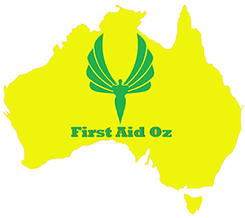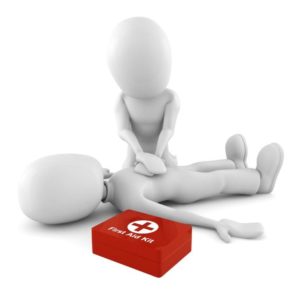Cardiopulmonary Resuscitation – CPR
Cardiopulmonary resuscitation, more commonly known as CPR, is an emergency procedure consisting of chest compressions often combined with artificial ventilation in an effort to manually preserve brain function until further measures are taken to restore spontaneous blood circulation and breathing in a person who is in cardiac arrest.
If the person is unconscious and not breathing effectively, CPR must be performed.
Before you begin
- Is the environment safe for the person to perform CPR, and the casualty ?
- Is the person conscious or unconscious?
- If the person appears unconscious, tap or shake their shoulder and ask loudly, “Are you OK?”
- If the person doesn’t respond and you’re with another person who can help, have one person call 000 or the local emergency number and if one is available, get the AED, In the meantime the other person begins CPR.
- If you are alone and have access to a telephone, call 000 or your local emergency number before beginning checking the airways are clear , and then performing CPR. Once again, get the AED first, if one is available.
- If an AED is available, deliver one shock if instructed by the device, then begin CPR.
If you’re not trained to use an AED, the 000 operator may be able to give you instructions over the phone.
Remember the trigger for performing CPR is when you have an unresponsive/unconscious casualty (R) and go on to find the are not breathing (B), that is when you commence Cardiopulmonary resuscitation (C)
See our article explaining DRSABCD
Now it’s time for Cardiopulmonary Resuscitation
Chest Compressions
As soon as possible after it is discovered there is no breathing, the rescuer should begin chest compressions.
Chest compressions are performed to keep oxygenated blood flowing to the brain, to slow down or minimize the rate of brain injury.
You need to make sure the casualty is on a solid surface, preferably the floor.
Placing the heel of one hand in the center of victim’s chest. You can then place your other hand on top of the first and interlock your fingers. With your hands in place and your arms straight, you want to lean over the victim so your shoulders are over his chest, and arms vertical.
This puts you in the best position to provide adequate chest compressions, around 1/3 the depth of the chest, to ensure you compress the heart, and at a rate of at least 100-120 compressions per minute. You need to use your entire body weight (not just your arms) when doing compressions.
The method varies from adult (2 hands), Child (1 hand) or infant (2 fingers)
Adults, are generally regarded as individuals at puberty or older; children, are from one year of age up to puberty; and infants, are individuals under the age of one.
After completing 30 chest compressions, you want to perform two rescue breaths.
However, there may be a situation where you’re unable to perform rescue breaths due to the victim’s injuries, or if you’re not trained in CPR, or you’re just not comfortable performing the procedure, particularly since the onset of COVID-19.
In those situations, you can perform hands-only CPR, which is only the compressions without the rescue breaths.
Rescue Breathing
Rescue breathing is performed to force air into the lungs of a person who has stopped breathing.
After administering 30 chest compressions, you want to immediately provide two rescue breaths.
First, tilt the head back, and then lift the chin with your fingers. This action opens the victim’s airway. For adults and children, you pinch the nose closed and give the first breath. This breath should be afull breath lasting for at least one second.
As you are breathing, you want to look to see if the victim’s chest is rising. If the chest rises, give a second breath.
If it doesn’t, you want to re-tilt the head and try again. If the breath still does not go in, it may be due to an obstruction blocking the airway. This can be removed with a finger sweep if you can see the object.
Thirty chest compressions followed by two rescue breaths is considered one cycle.
Rescue breathing for an infant is modified slightly due to the victim’s smaller size. For an infant, you want to cover the nose and mouth with your mouth and blow a less forceful puff of air into the infant’s lungs.
You’ll continue the process of 30 chest compressions and 2 breaths until:
- professional help arrives,
- the victim shows signs of life, or
- you’re too exhausted to continue.
Enrol in a First Aid course today – it just may save the life of a loved one.
First Aid Oz is a trading name of Global Fitness Institute Pty Ltd. (RTO 21793)
Delivering Nationally Recognized First Aid Courses across Australia


The CPR it’s very important things to know about it so I can help out with alot of things
Good breakdown of all of the different types of CPR eg, Adult and infant